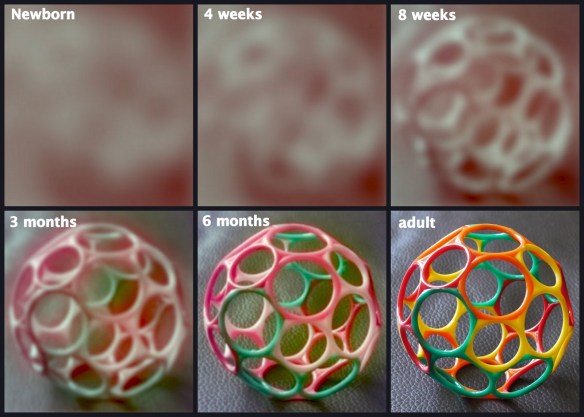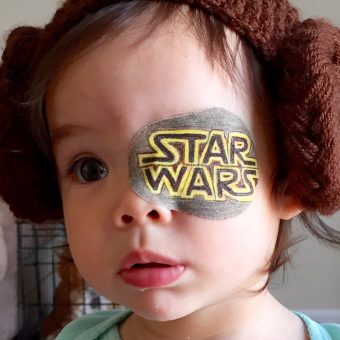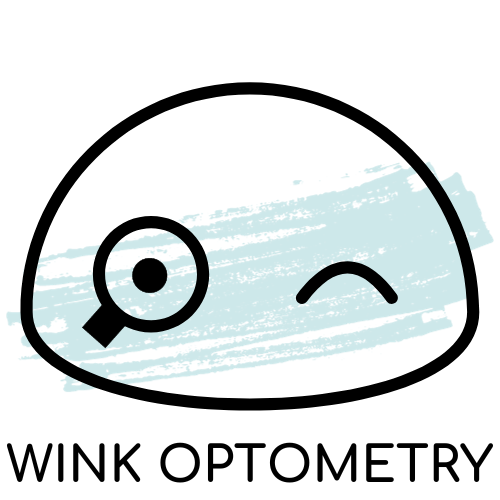Lazy eye is the layman’s term for amblyopia which by definition describes the decrease of vision seen in one eye (very uncommon for both eyes to be affected) secondary to ocular development problems that are not fixed at a young age. In other words, the brain never learns to see 20/20 because of a refractive, eye positioning, or developmental issue that is apparent at a young age.

Contrary to what most people believe, babies don’t see what we see as adults. They actually only see 8-12 inches in front of them. As they grow, their vision develops and they learn to track things, use their eyes, together, and see further. It is crucial to have any physiological defects treated at this time to ensure amblyopia doesn’t develop. Such as congenital cataracts or other opacities/growths that impede vision. It is also important to note the positioning of the eyes. If one eye is turned in/out and the brain is unable to fuse the two images from each eye together, it will block the image from the blurrier eye – causing amblyopia in that eye. If this isn’t treated at an early age, it can cause the eye turn to worsen and the brain will never have the proper connection to the eye to see clearly with. The brain will also not learn to use the eyes together. True depth perception is only achievable with both eyes working together.

When the prescription in each eye is too drastically different, the brain will also stop using the blurrier eye unless the prescription is corrected and the brain is able to fuse the images. It is possible for a combination of things to cause amblyopia as well – ie. large prescription difference that may cause an eye turn that makes amblyopia more apparent. Glasses will always be the first line of treatment to ensure the brain is receiving a clear image. Patching the good eye will be used as well to force the brain to reconnect with the amblyopic eye. It is crucial that patching be taken seriously if prescribed by your eye doctor. Although the brain will always be plastic (able to change, adapt, and learn), it is not as effective to treat amblyopia at older ages (12+) due to less plasticity. Not to say it isn’t impossible, it just might take a lot longer. This is why it is important for kids to get their eyes checked at an early age. Your eye doctor will monitor changes and ensure that your child’s eyes are developing normally to prevent amblyopia from becoming an issue.


Pingback: Sports Vision Training – Coming Soon – Wink Optometry